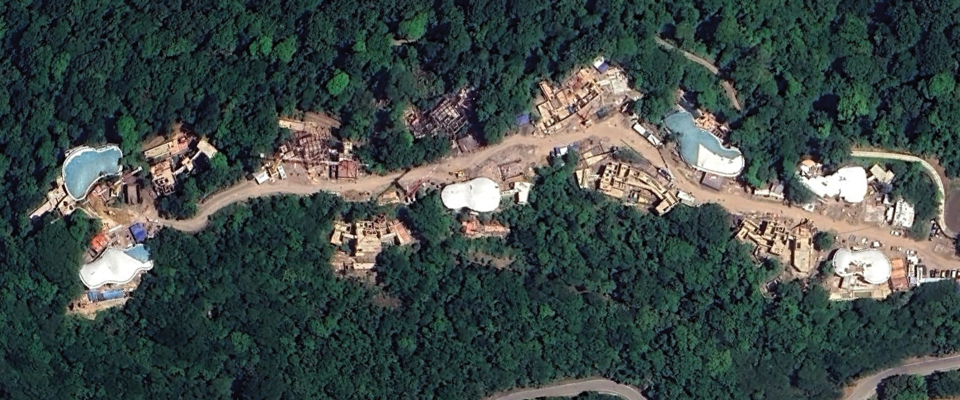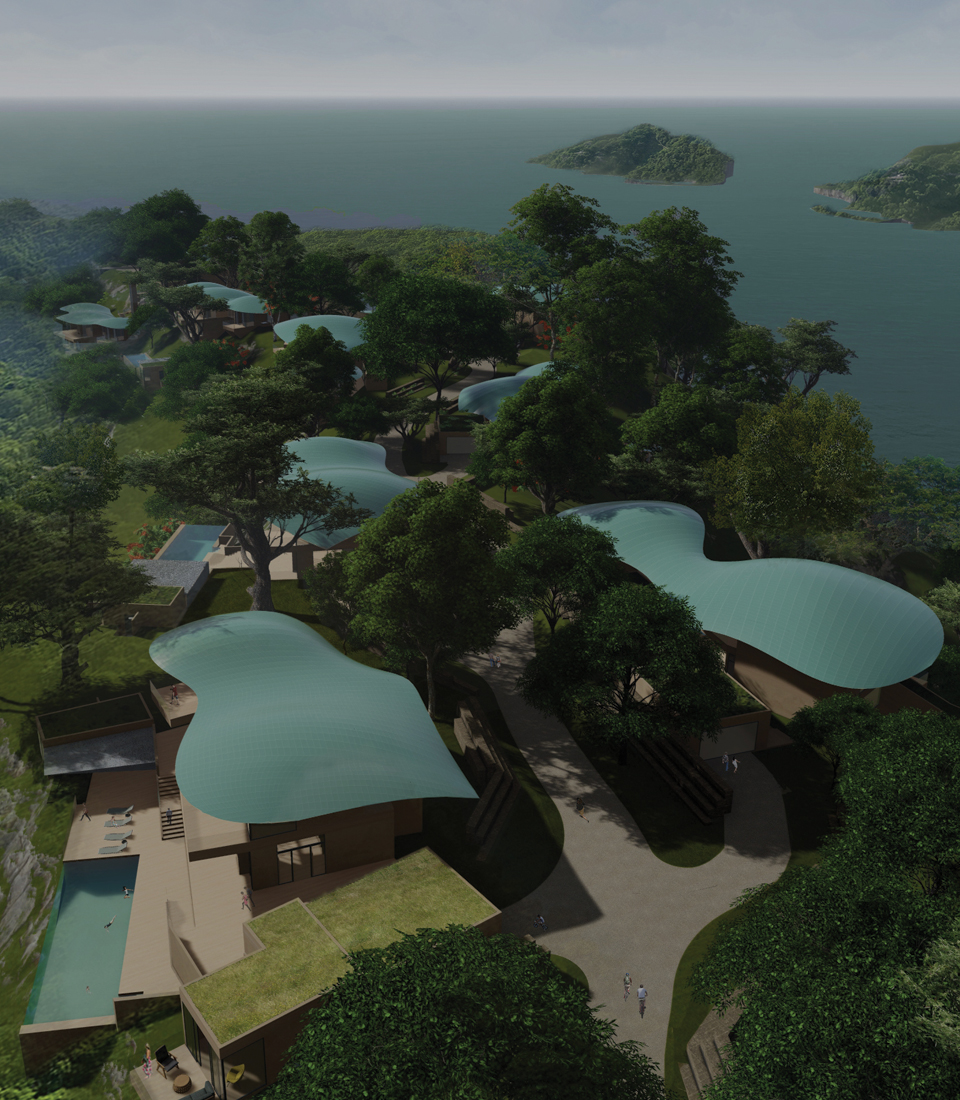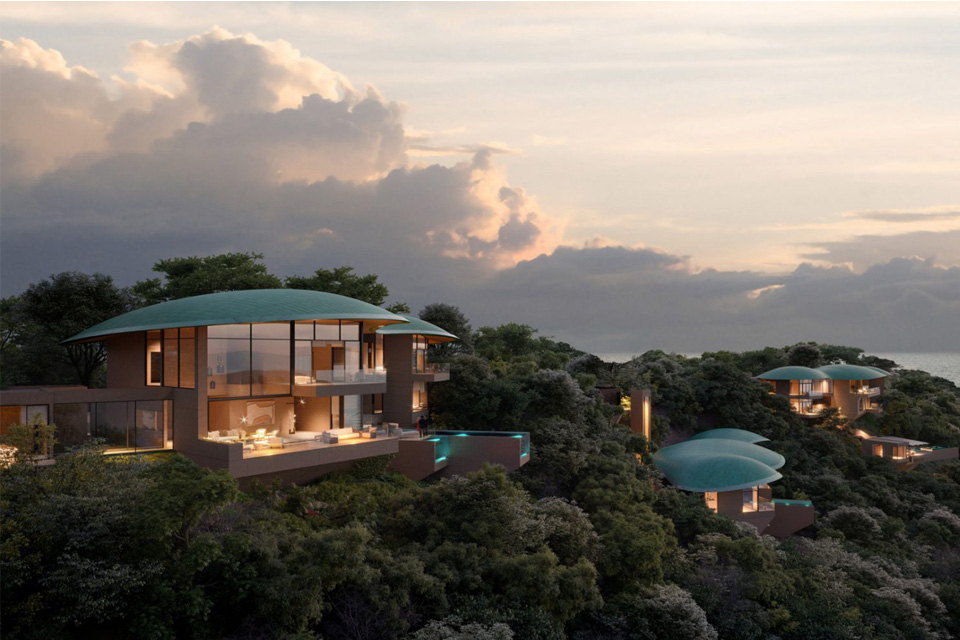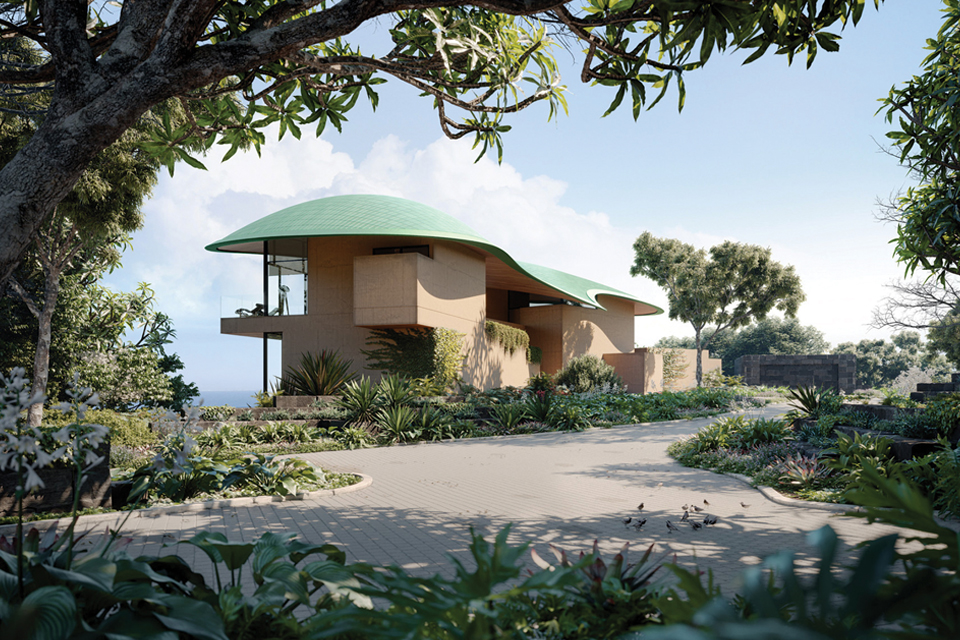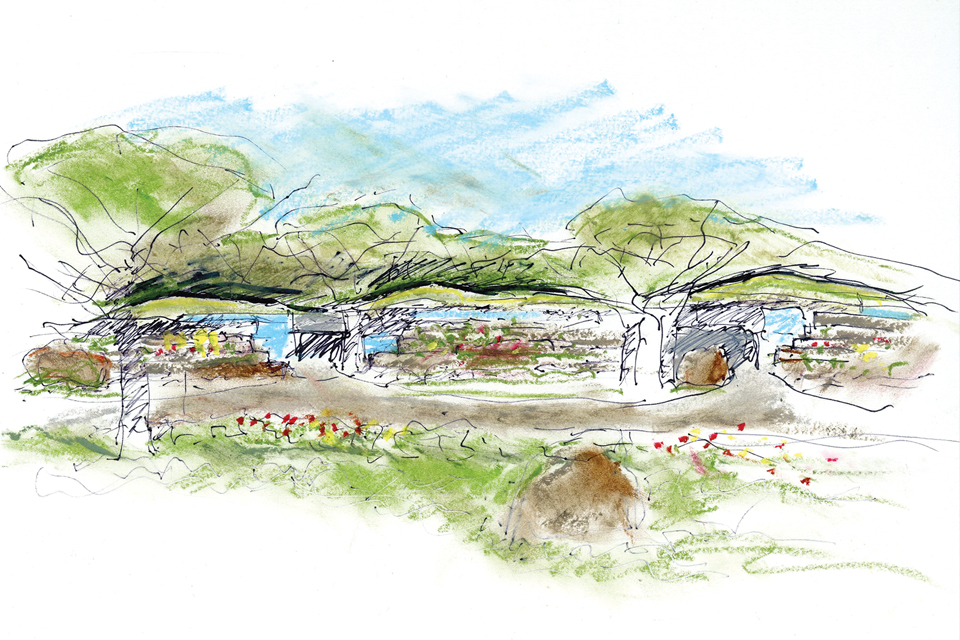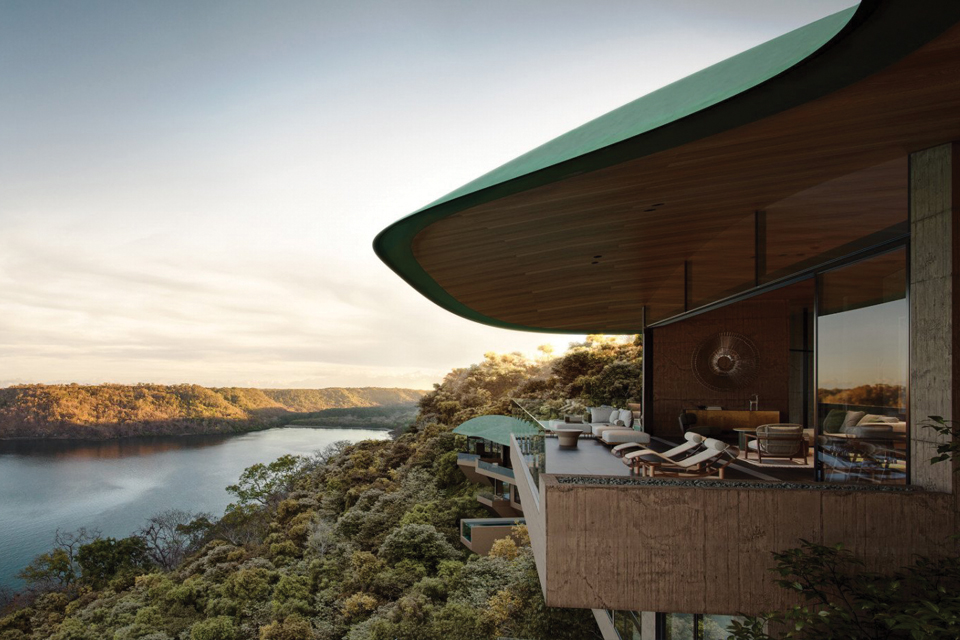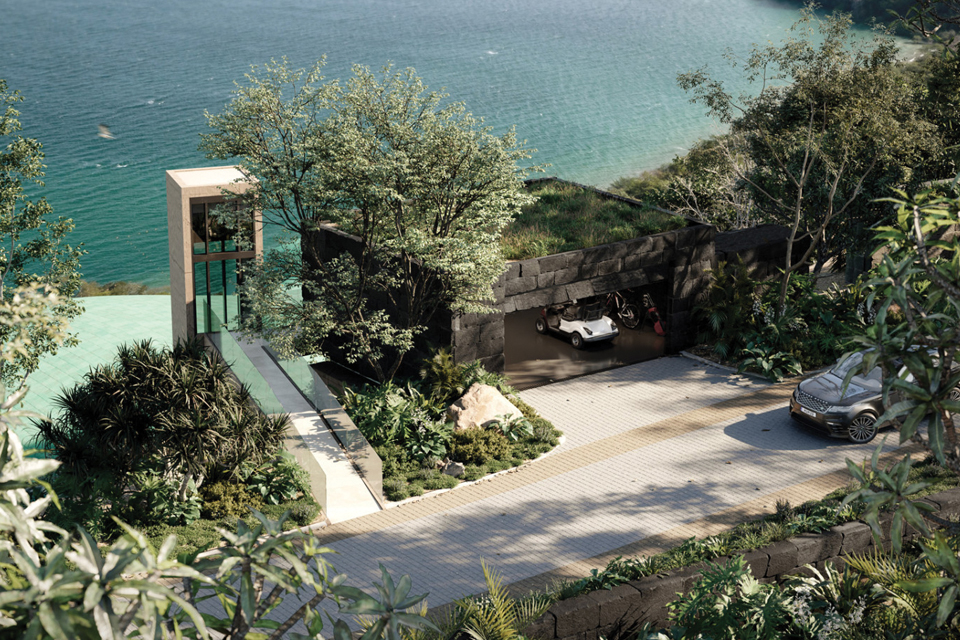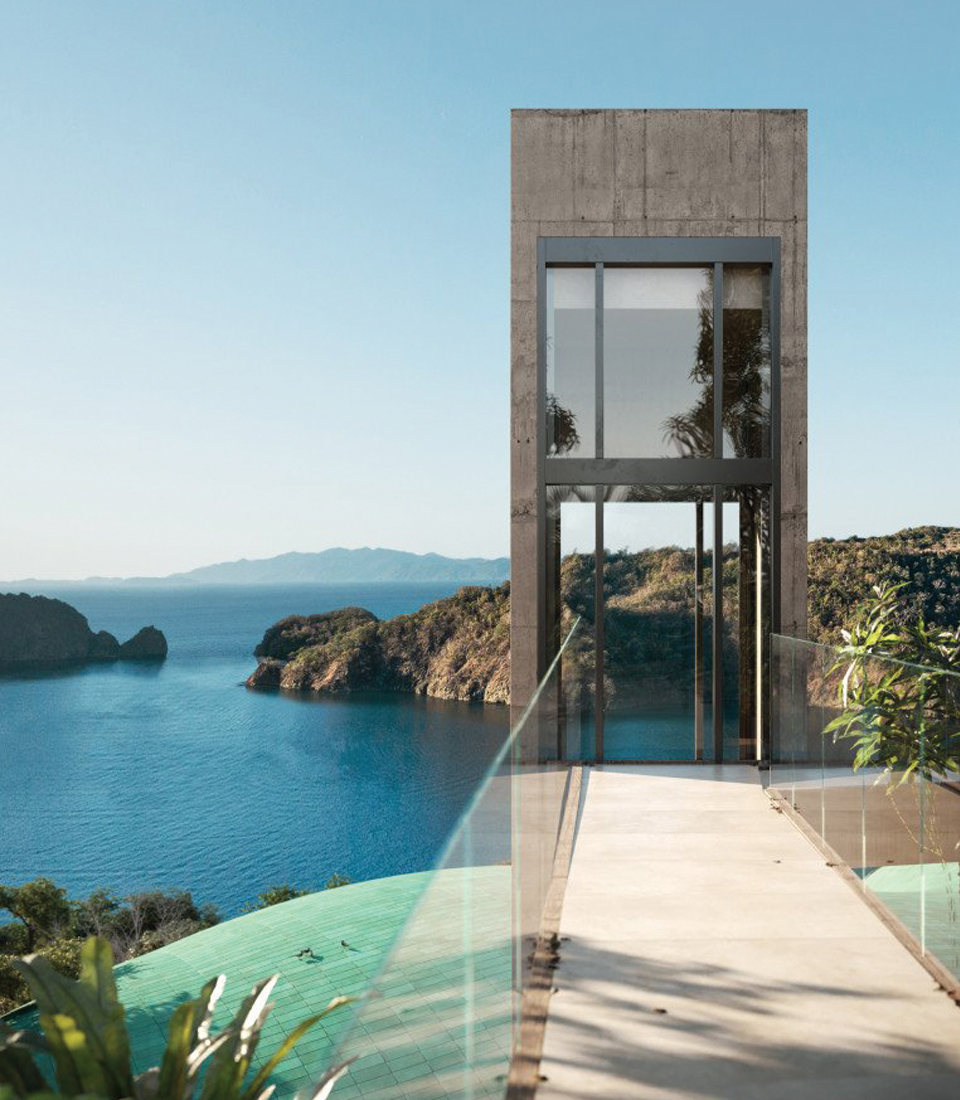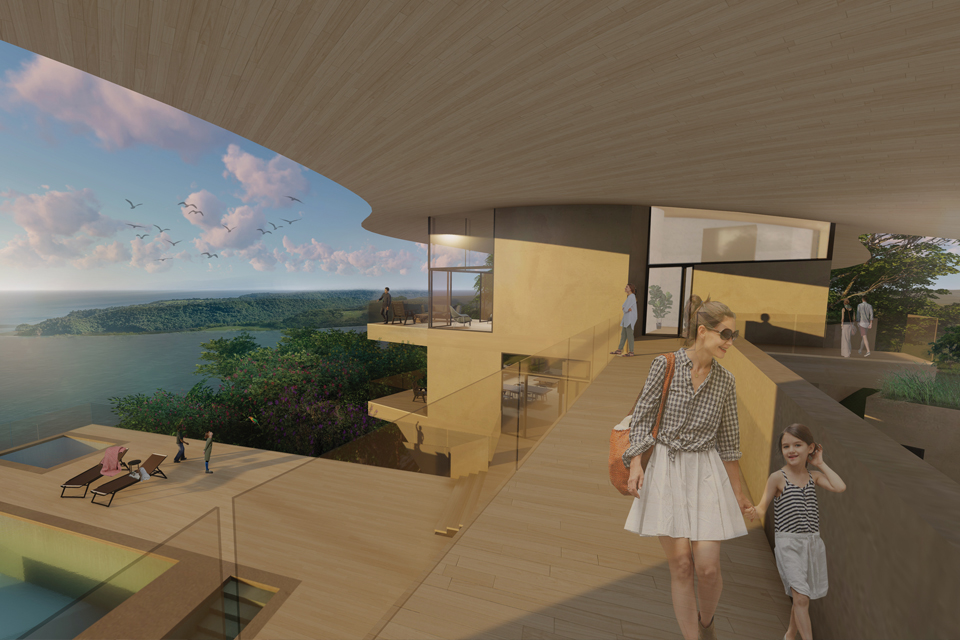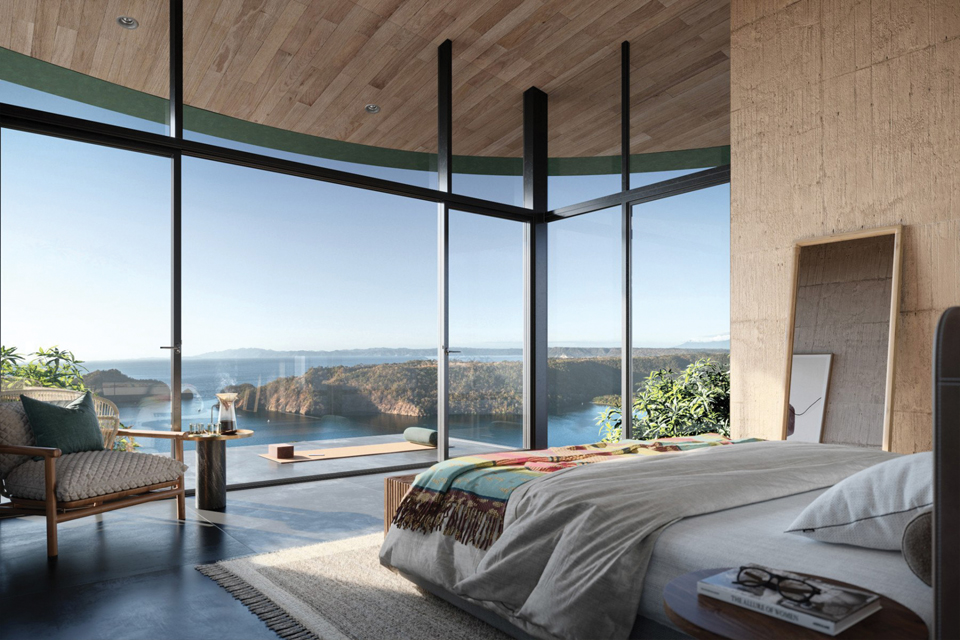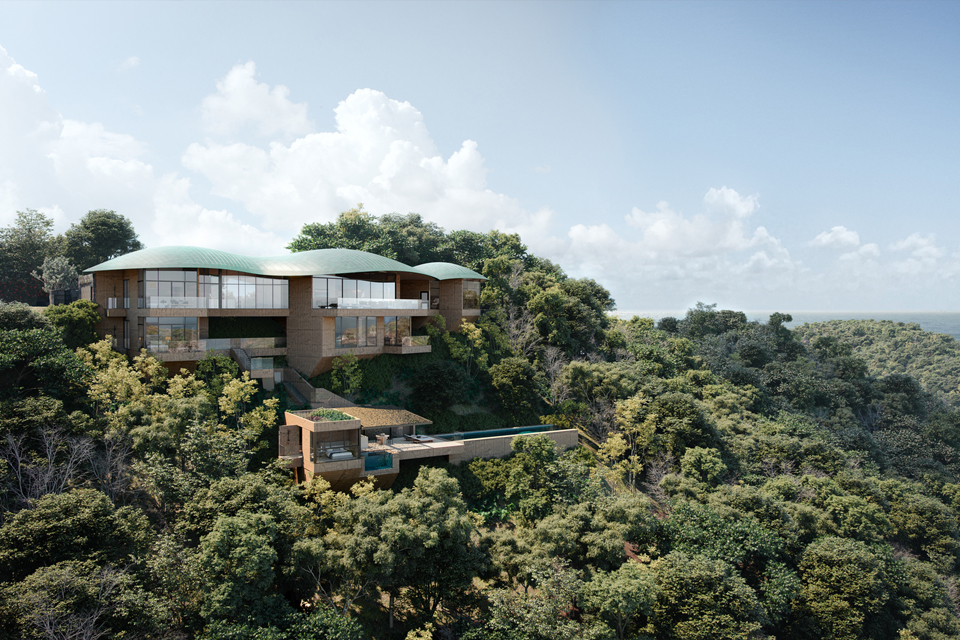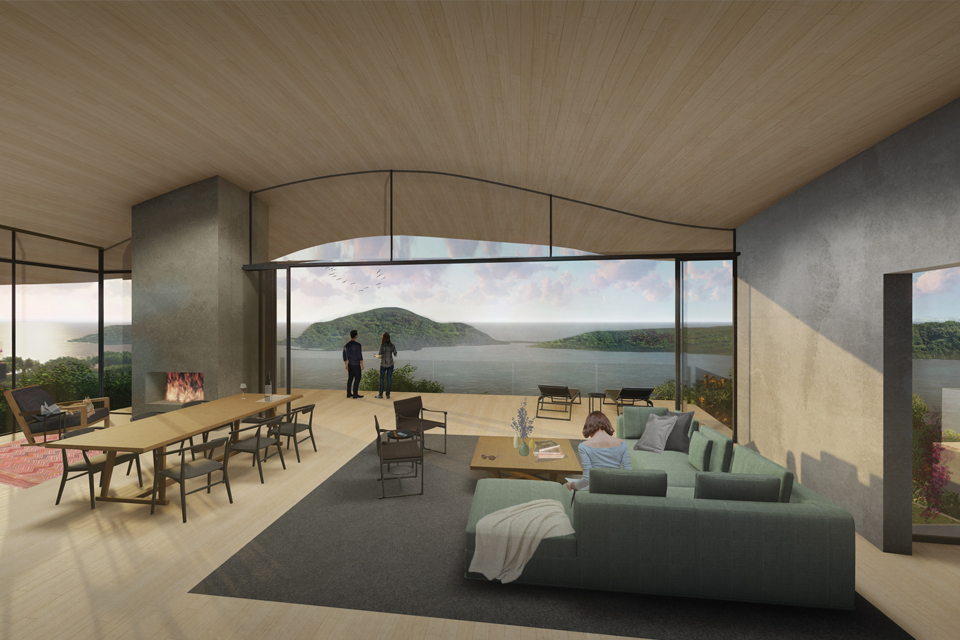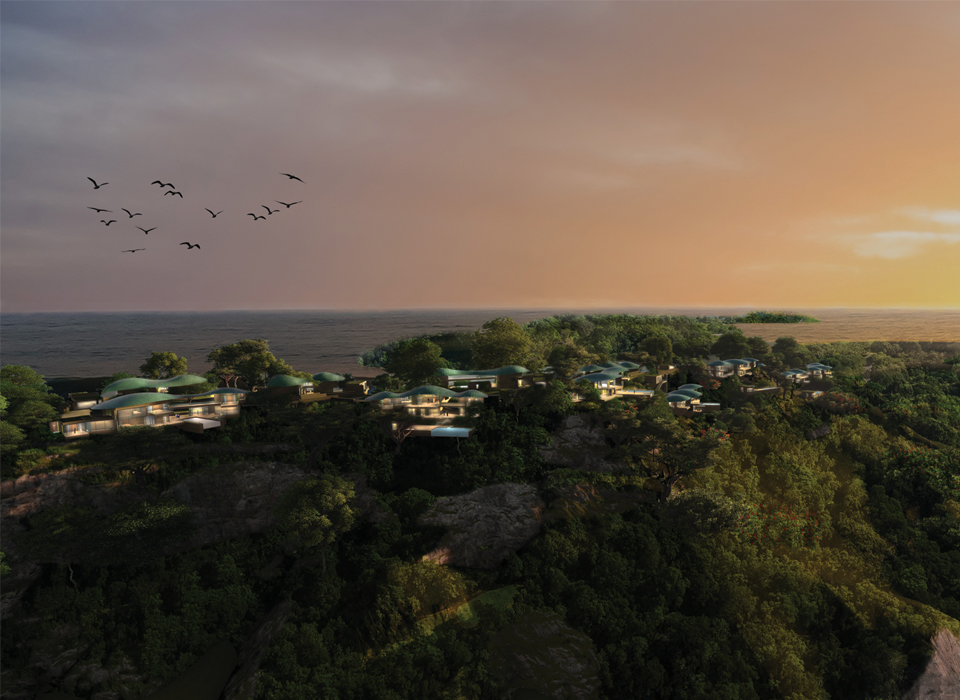|
BAHIAS Pennisula Papagayo, Guanacaste, Costa Rica Under Construction 2024 "It is rare to come across places where architecture, particularly in the case of contemporary buildings, would complement a beautiful natural setting in decidedly positive ways. Most locations are appreciated either because of the landscape, or the architecture, not both. Buildings designed by world-class masters tend to be built in stark contrast to the landscape they are surrounded by, and if we were asked to take a perfect shot of a gorgeous view anywhere, we would most likely make sure that nothing man-made gets in the way. These two contrasting worlds are successfully brought into harmony at Bahías—Antoine Predock's latest masterwork, a community of 13 houses at Costa Rica's famed Peninsula Papagayo." -Vladimir Belogolovsky, "'I Wanted to Dance Here!': a Conversation with Antoine Predock about Bahías, a Community of 13 Houses in Costa Rica," Archdaily.com, June 8, 2021 What took me by surprise is that right away, as soon as you enter the site, you are immersed in the jungle. The sheltering tree canopy is overwhelmingly beautiful. You get a feeling of being protected by a hovering umbrella. The area is known for its volcanoes. On a clear day, you can see the iconic Arenal Volcano. There are tufa strata emerging from the slopes, outcroppings of some of the oldest rock formations in the country, and large boulders throughout. We preserved virtually all specimen trees, and no boulders were displaced. The volcanic stone, the tree canopy, the sky, and the Pacific Ocean—fire, earth, air, and water. I don't see Bahías as 13 houses. They are a continuum bound together by the blue-green patinated copper of all the roofs—a flowing, undulating abstraction of the surrounding jungle canopy. The roofs are distanced from one and other, but appear as a continuous flow. And as the copper canopy hovers above, a necklace of low stepped fieldstone frames the access lane and links all 13 houses along the ridge, like dancers that are twisting and turning. Every wall, space, and terrace becomes a part of that continuity. Engaging the beauty and power of the Peninsula Papagayo, with its visceral connection to deep geologic time and its extraordinary flora and fauna, is a dream come true. For years I'd envisioned Costa Rica as an exotic, ecologically hyperaware "Switzerland of the Americas." It's true.
"Control tower" site spread across the largest area of flat terrain on the ridge. Passing through the dichroic glass entry gate, a unifying terraced fieldstone necklace flanks Bahías Lane. The necklace morphs into individual garages and anchors the houses to the volcanic stone ridge. The houses lock into their jungle precinct with precisely aimed views in a 360 degree sweep around the ridge toward bays, islands, and the Pacific Ocean. The hovering green copper roofs shade and shelter terraced pool decks below. 13 houses, 13 sites—each with different topographic conditions. The personality profile for each site analyzed—cliffs, iconic boulders, special trees, variations of view trajectories. It was the topography—flat, climbing, descending—that defined distinct aspects of each house.
|
| PROJECTS | TEACHING | CONTACT |
